Take yourself back to late August. Fall is right around the corner, birds are moving in larger numbers, their plumage starting to change to their overwintering colors. Dewey spider webs start to fill the fields in the mornings. Many of the sweet corn successions at the farm have been harvested. Carrots and potatoes have been in the ground for months while other crops have just been transplanted in the field.
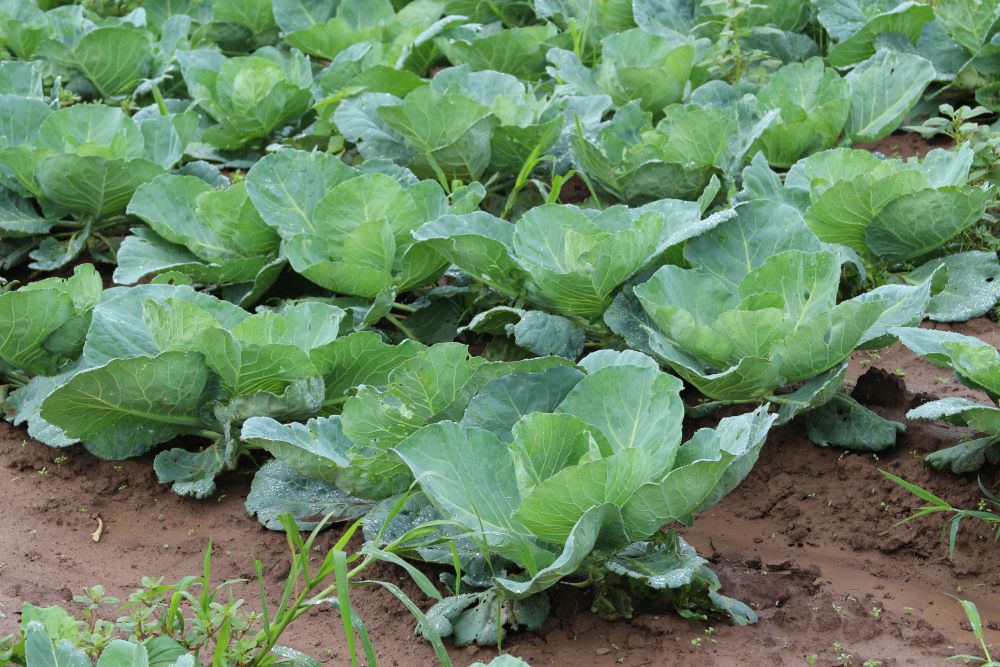
A typical day of scouting the brassicas in late summer involves walking through sections of broccoli, red and white cabbage, and cauliflower. Small white butterflies flutter throughout these sections occasionally landing on leaves. Morning dew droplets have almost tried up on the leaves by late morning. When going to scout, I get my fanny pack ready with a field notebook, a map of the vegetable field, a hand lens, and a couple vials just in case I find something I want to get a closer look at. This was my second year scouting the vegetable fields during the growing season. After combing through Anne Bloomfield’s field notebooks from previous years and looking back at the last couple seasons, there are patterns that arise, year after year, and common visitors to the brassica fields. However, the degree of pressure from pests and diseases varies and there are always other surprises if we take our time to look closely at the plants that are feeding people and wildlife.
Common Pests
Brassicas begin in the greenhouse and are then transplanted in the vegetable fields. Once they are in the field it seems every insect wants a taste. First, flea beetles can cause high leaf damage when the seedlings are small. Flea beetles get their name because they quickly jump like fleas when startled. There are many species and genera of flea beetles but the most common on brassicas are Crucifer (Phyllotreta cruciferae) and Striped flea beetle (Phyllotreta striolata). They can cause substantial damage to newly transplanted plants when the leaves are still small.
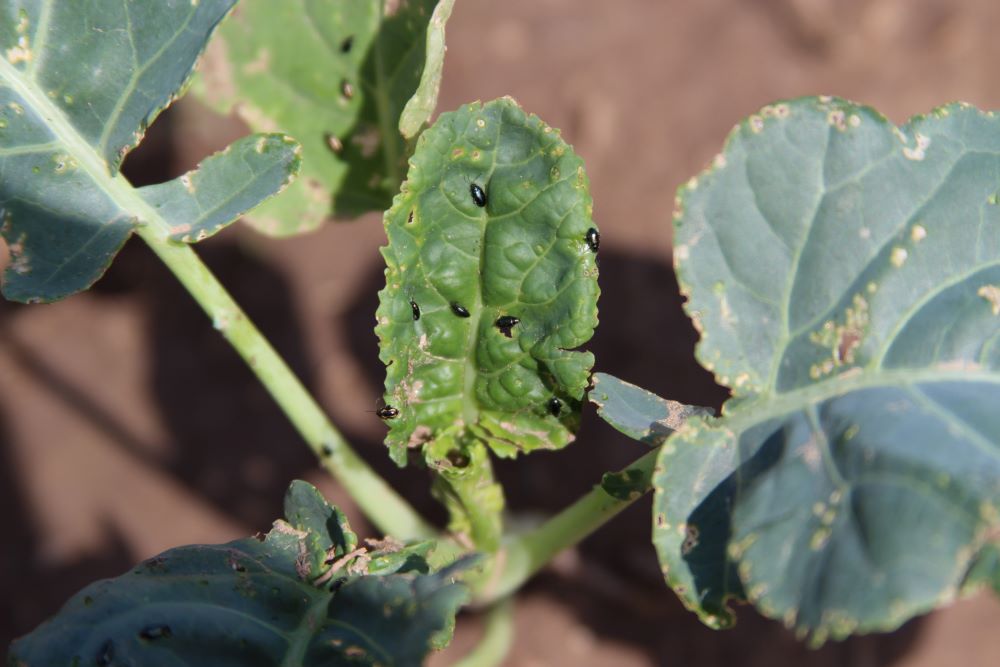
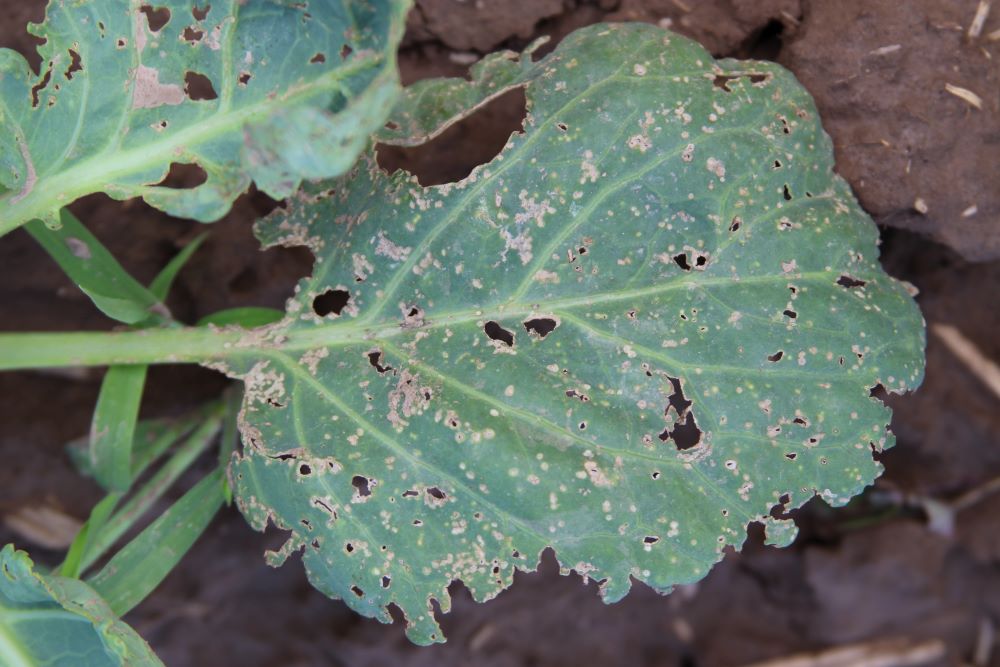
Then, the caterpillars show up like clockwork. When scouting, we use the New York State Integrated Pest Management Program’s (NYSIPM) scouting protocols for brassicas. Using this method, two plants at 10 random stops are inspected throughout an entire section for a total of 20 plants scouted. At each stop, the upper and under side of each leaf is inspected and we note the number of caterpillars and the species on each plant. It is also helpful to know approximately at what stage caterpillars are at, if they have pupated, or if there are any eggs present. There are three main caterpillars we scout for: Imported Cabbageworm (Pieris rapae), Diamondback moth (Plutella xylostella), and Cabbage looper (Trichoplusia ni). All three species eat the leaves of the plants and can damage the marketable portion of the crop.
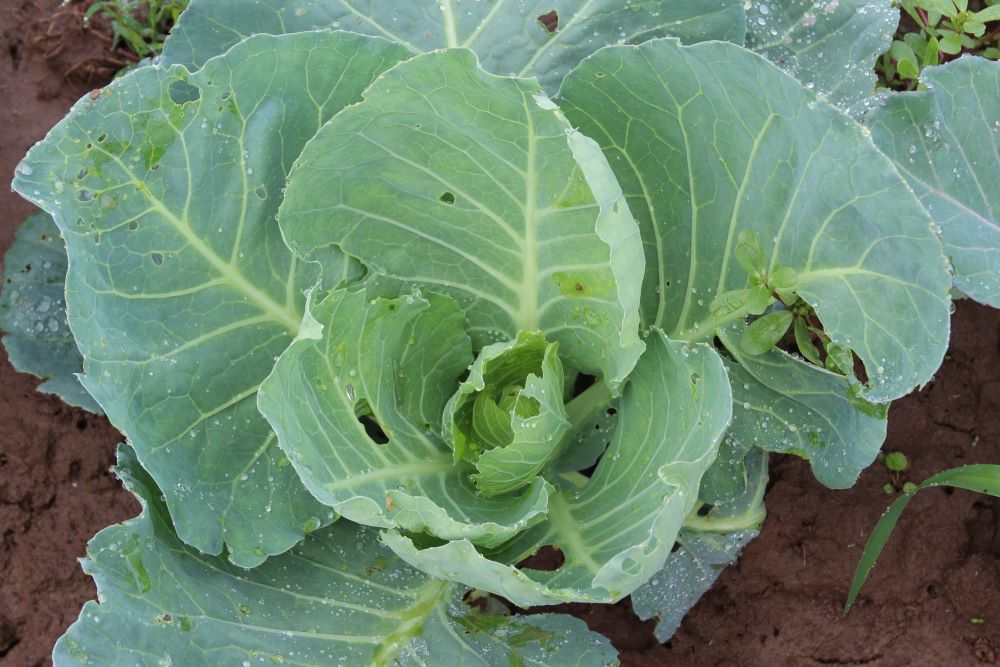
Imported Cabbageworm was the most common pest this year and in previous years. It overwinters in the Northeast making it the most common pest of brassica crops in the region. Their eggs are tiny white to yellowish in color, bullet or barrel-shaped and ribbed. They are almost always on the underside of leaves. As soon as the eggs hatch, the caterpillars start munching on the leaves. Eggs and first instars – a caterpillar’s first developmental stage – are easy to miss, they are on average only a couple millimeters long. Imported Cabbageworms are velvety green with a yellow strip in the middle of their back that runs down from their head. They also have small yellow dots on both of their sides and many hairs on their body making it look like fuzz. Adults are white butterflies, or “Cabbage whites” as they are widely known as, that flutter throughout the fields looking for leaves to lay their eggs on. Females have two black spots on their forewings while males have one spot, and both have a black area on the tips of their forewings.
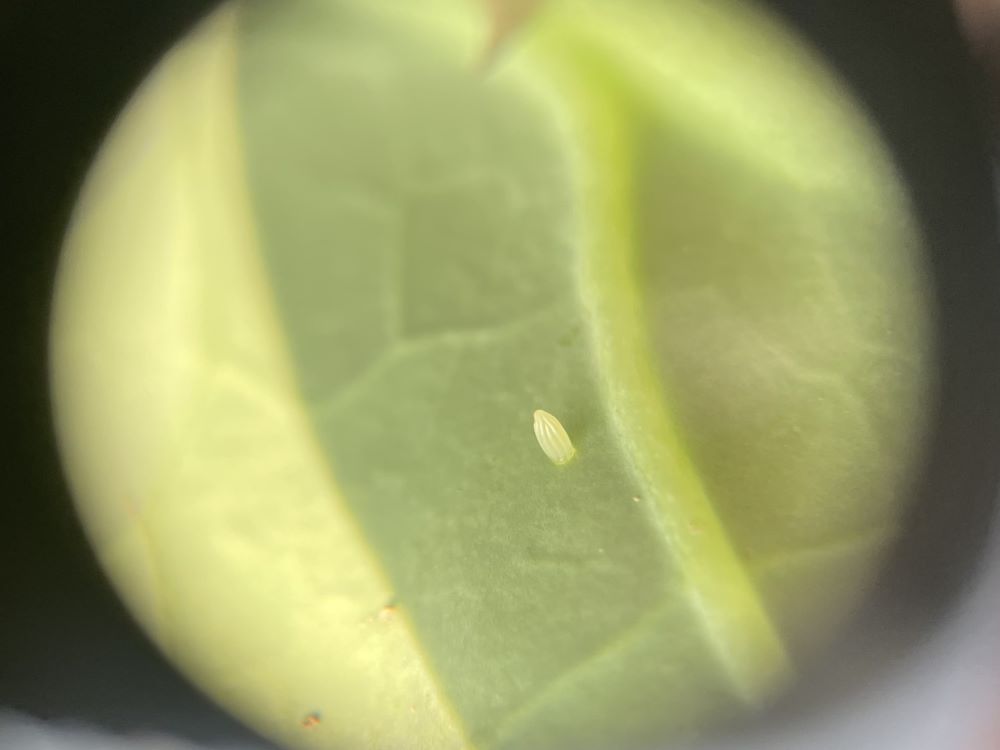
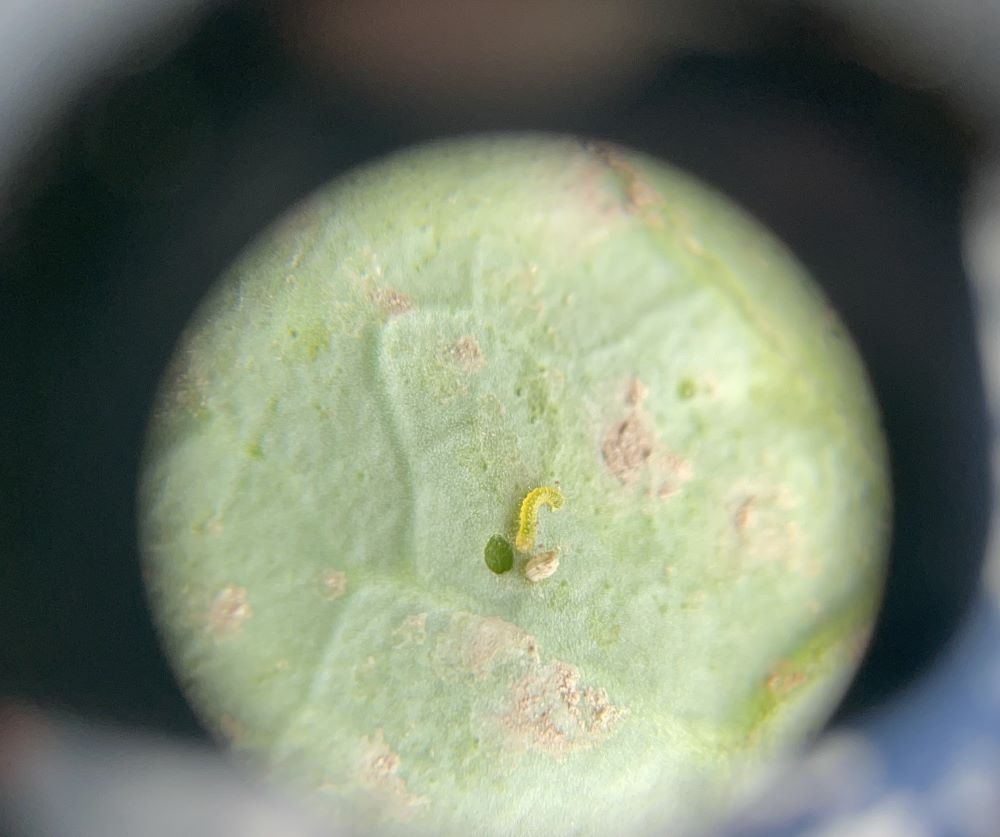

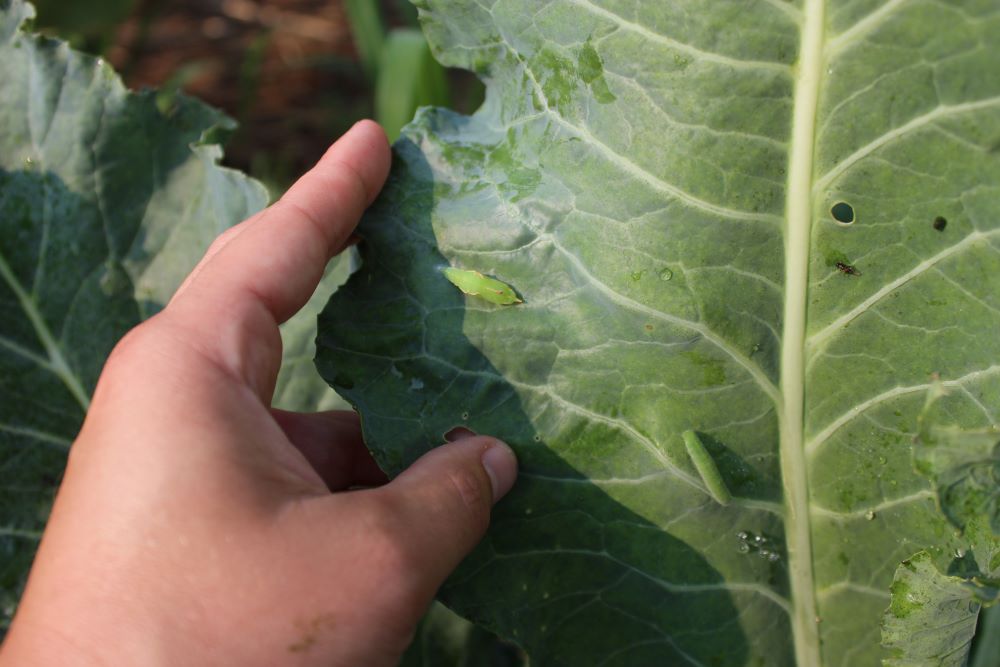
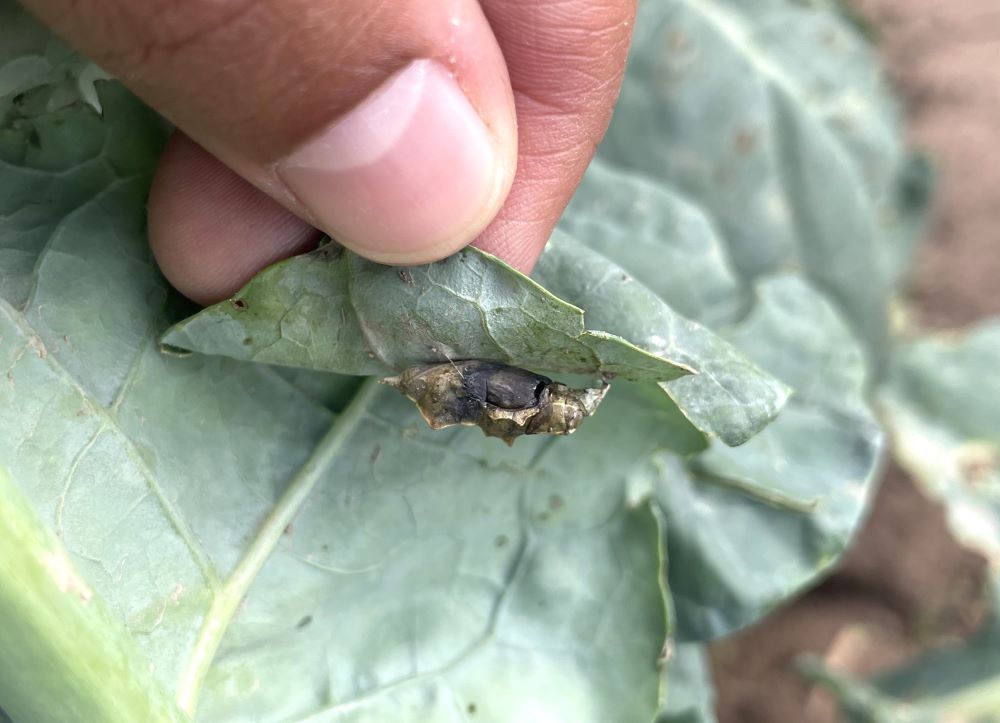
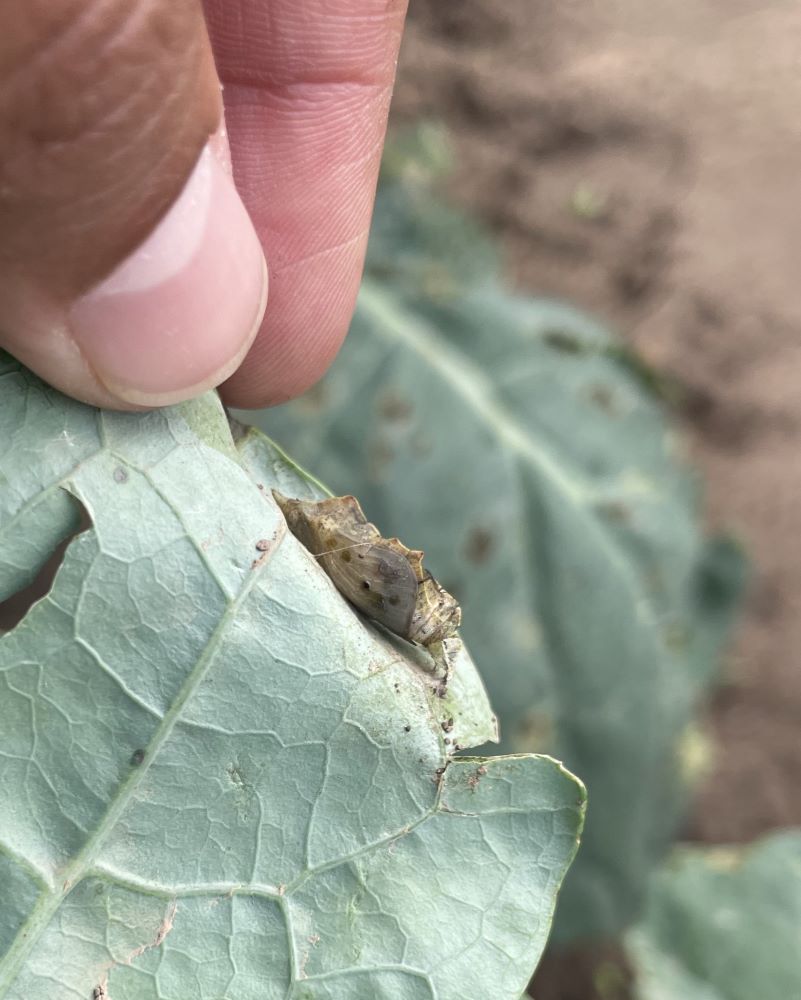
The Diamondback moth caterpillar was the next most seen caterpillar in the brassicas this year. They are not able to survive the winter months in the Northeast, so individuals make their way up from southern regions where they overwinter. Diamondback moth larvae are bright green in color and have a few dark body hairs which are often marked by a white circle on their body. They have a distinctive V shape at the end of their body created by a pair of prolegs sticking out from their end. When disturbed, they drop down from the leaf on a silk thread. In general, they move a lot more when disturbed compared to imported cabbageworms who are more sluggish and don’t move much even when disturbed. This year, I found many diamondback moths in their pupal stage both on the outer and underside of leaves. They create a delicate, white, open-mesh cocoon and stay inside it around 8 days on average before emerging as narrow brown moths.
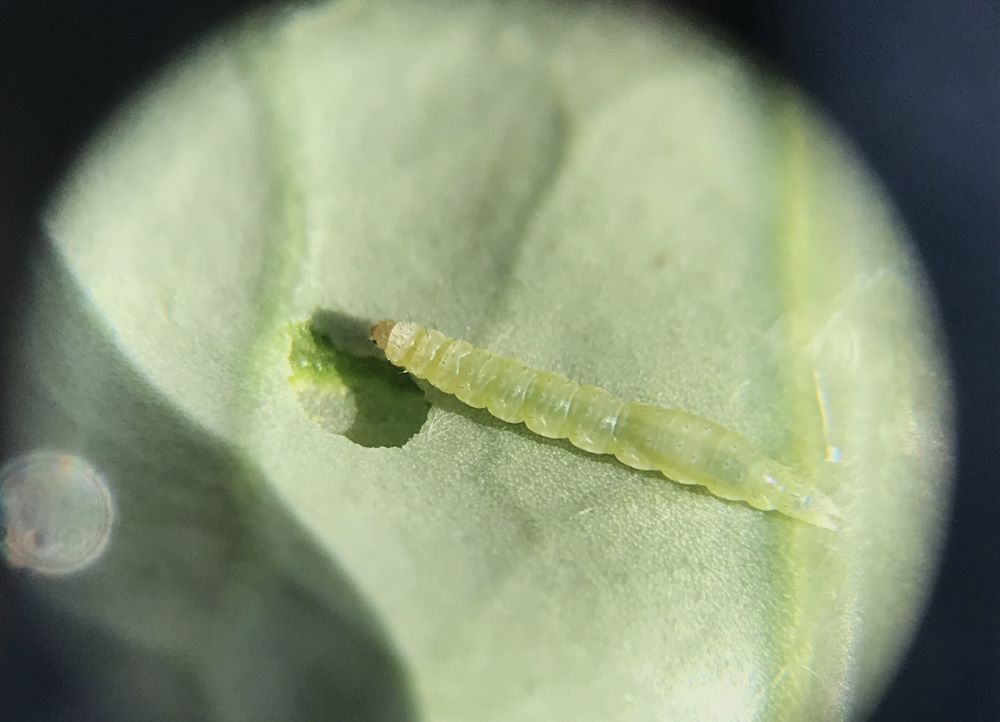
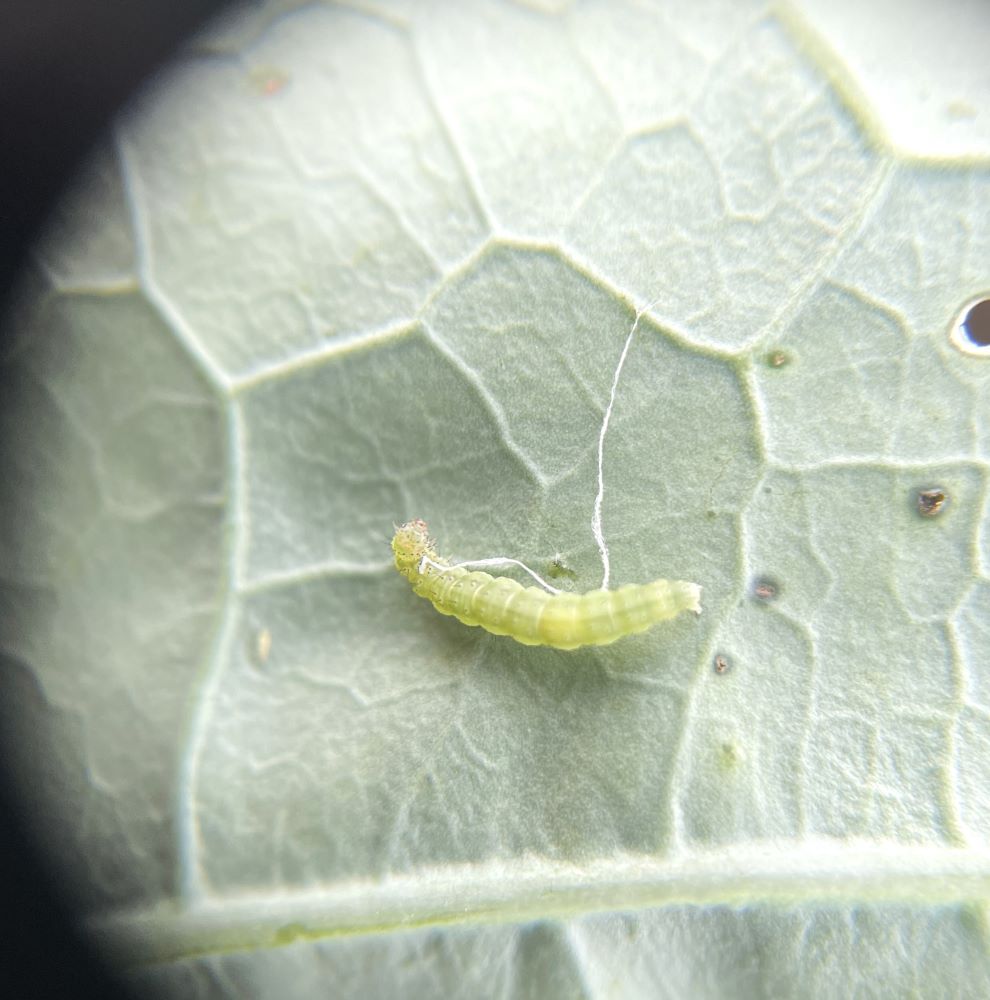

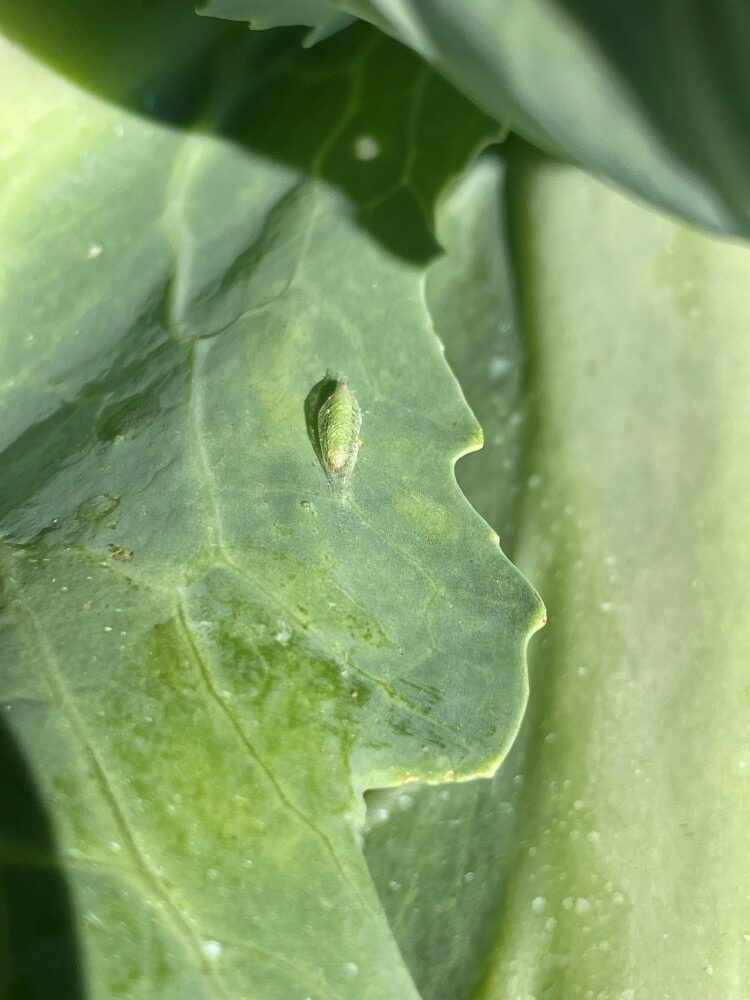
Lastly, the Cabbage looper is another common pest on brassicas, although I personally did not see one during my times scouting this year. Like the diamondback moth, this species is not able to survive long periods of cold, so it does not overwinter in the Northeast. Every year, Cabbage looper moths also make their way north after overwintering in southern areas. Eggs are yellowish white, ribbed, and circular. At their larval stage, their bodies are green, narrower on the top portion of their body, often with thin white stripes at the sides of their body. Their distinctive feature, and the source of their common name, is the way they crawl. They have three pairs of true legs at the front end of their body and three pairs of prolegs at the end of their body with a lot of space between the true legs and pro legs. To crawl, they arch their pack forming a loop, then project their front body section forward. When they pupate, they enclose themselves in a thin, fragile, white cocoon – thinner than a diamondback moth pupas’ cocoon.
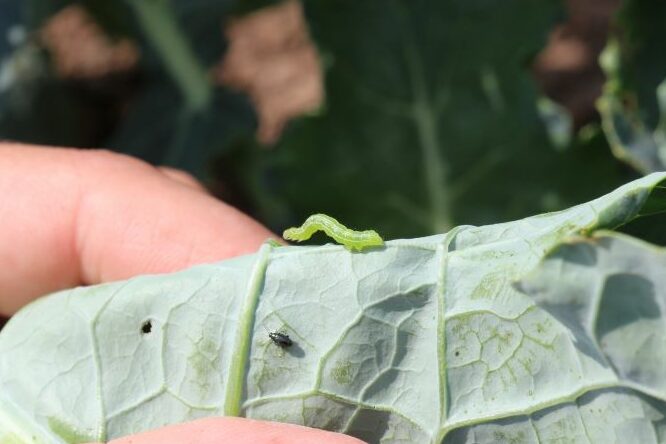
Every year, the patterns arise. Sometimes the caterpillars cause a high level of damage. Other years, there are not many caterpillars on vegetables or only cause high damage on certain sections. It might not be considered ideal to see many pests, but it is exciting to find different species in the vegetable fields using them as habitat.
Test your knowledge with the quiz below and see if you can match the three common caterpillar pests to the correct image.
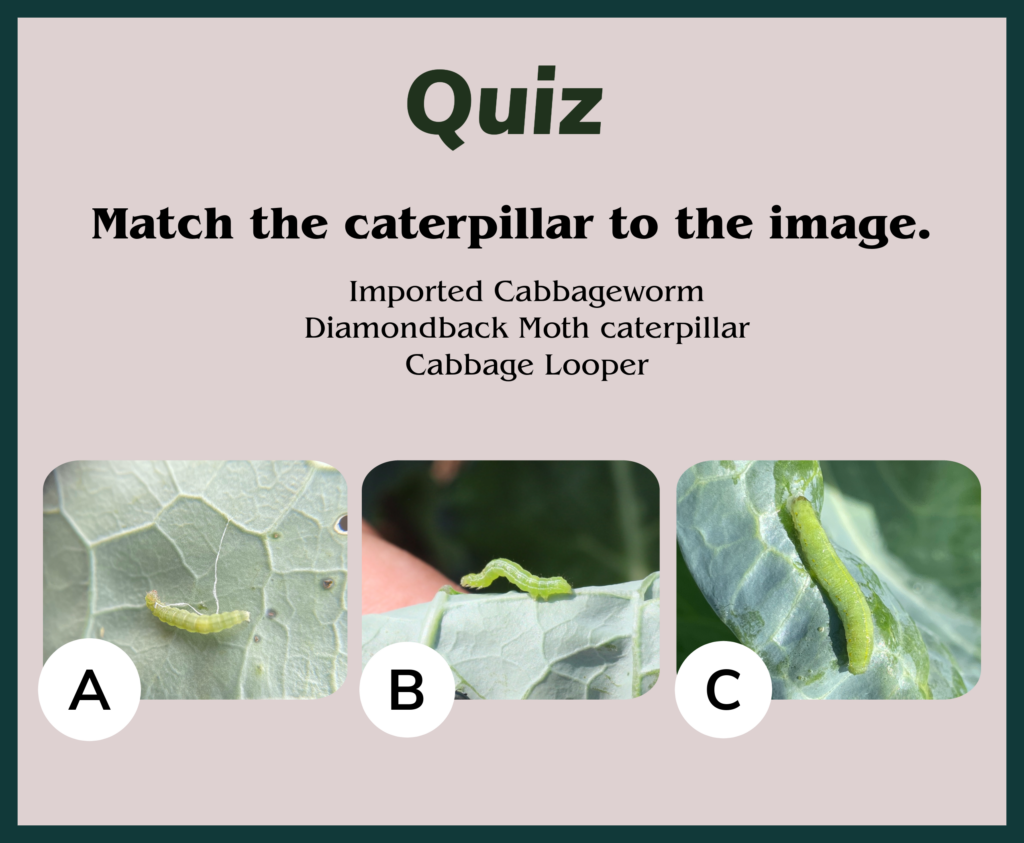
Persistent Diseases
Alternaria leaf spot is a common disease caused by a fungal pathogen that spreads spores aerially or by rain splash. Alternaria starts off with small black dots on the leaves, and as it matures, the dots enlarge to brown target-like circles as seen in the image below. We begin to see it on the leaves and if it progresses quickly, it can damage the crop heads. This year, one of the earlier sections of broccoli had high levels of Alternaria on the outer leaves but the later brassica sections had moderate or low levels of Alternaria. Black Rot is another common disease we’ve had at the farm consistently at varying levels of pressure. It is a pathogen that usually enters the plant through spores on the edges of the leaves then spreads from there creating a V shaped lesion on the leaf edges.
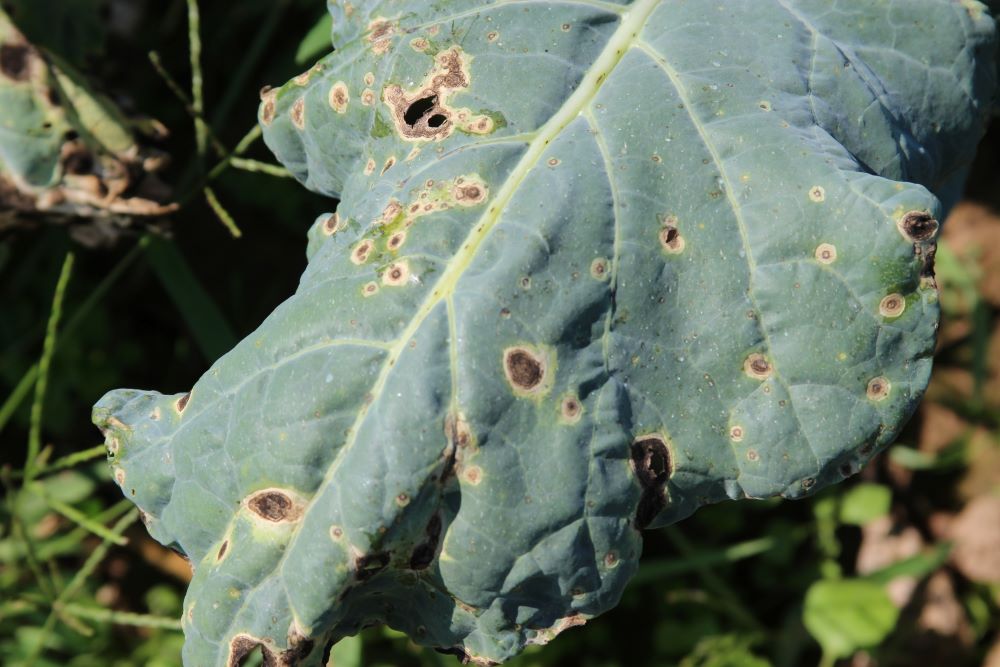
Other Surprises Among the Brassicas
Although we scout for specific caterpillars and diseases, there are always other insects and evidence of other species among the brassica sections. This year, I noticed more Harlequin bugs (Murgantia histrionica) in the cabbage than last year. They are a type of stink bug, their bodies a striking bright orange and black pattern. Their eggs are barrel shaped, flattened at the top and have a black and white pattern. They are often listed as pests on brassicas since they use their piercing mouthparts to suck on plant’s juices and can cause plants to wilt and brown. However, their numbers have not been high enough at the Farm Hub for them to cause significant damage.
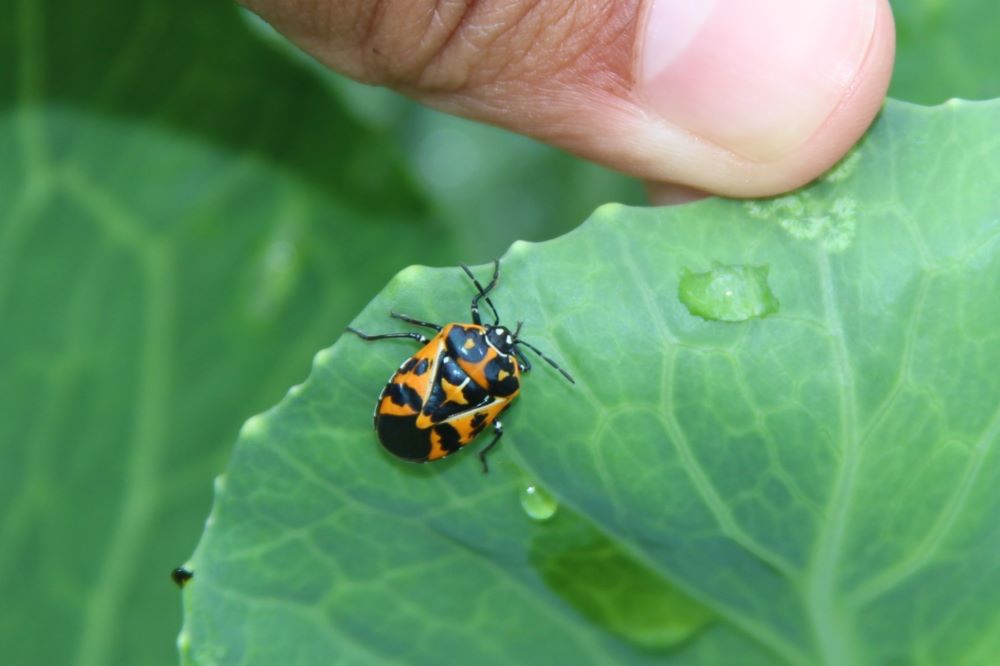


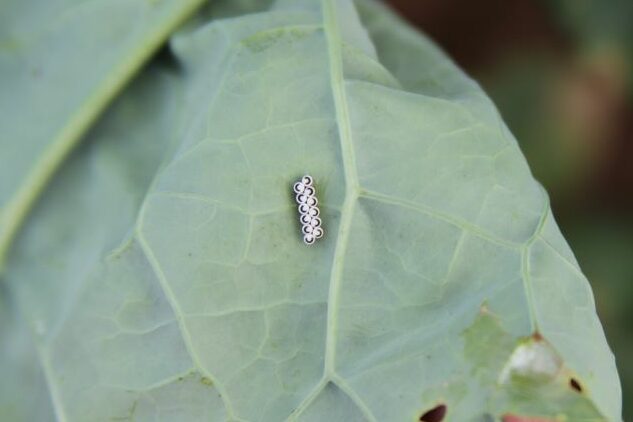
At first glance, a broccoli or cauliflower field may seem like just a field of green leaves but there are many species using them as habitat or passing by the field. Lady beetles are everywhere on the farm. Whenever I run into them – as adults, larvae, or eggs – I can’t help but smile. They are considered beneficial insects because at both their larval and adult stages, they eat pests such as aphids and pest eggs. Their eggs are bullet-shaped and a bright light orange color, usually in groups. As soon as they hatch, larvae search for food. This year, there were significant numbers of thrips on cabbage leaves mainly in part of the section that was closest to the onions. Thrips are associated as being a common pest on onions but can cause damage to brassicas in high numbers. Scroll through the photos below to see what other surprises were among the brassica fields this season.
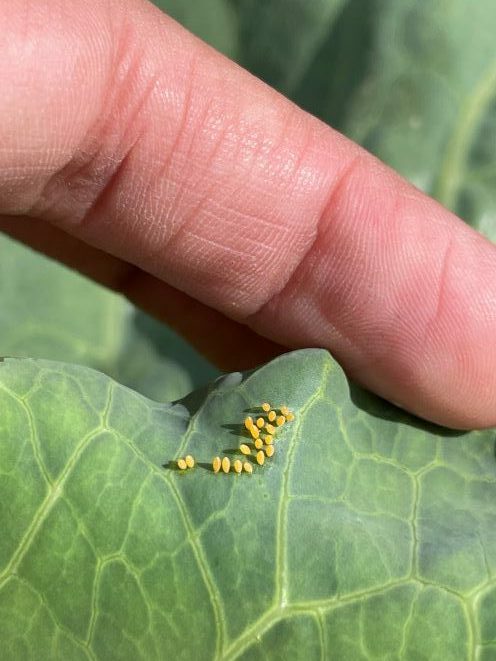
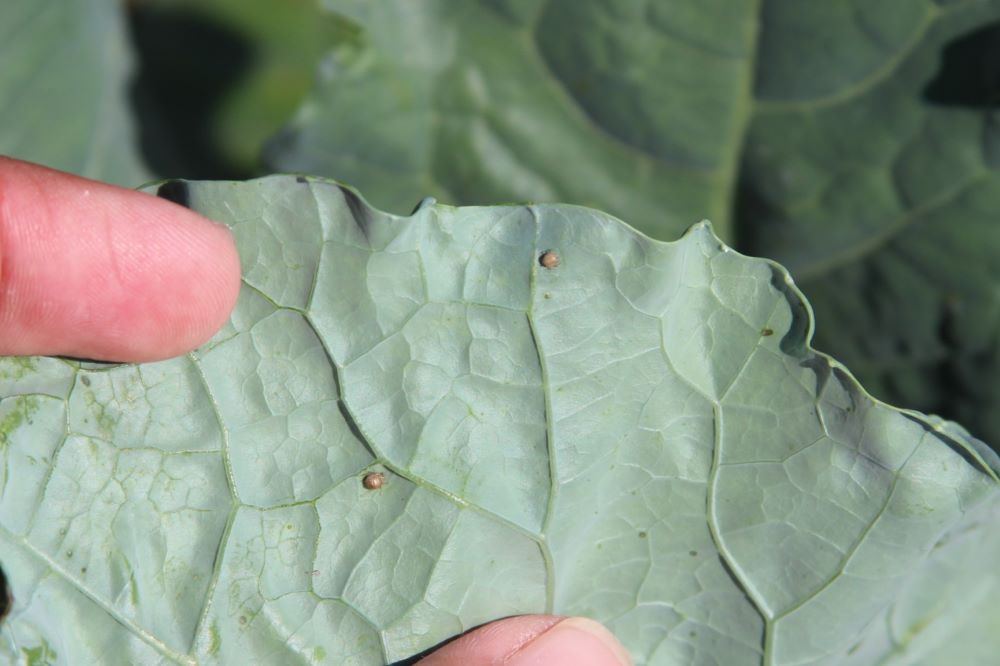
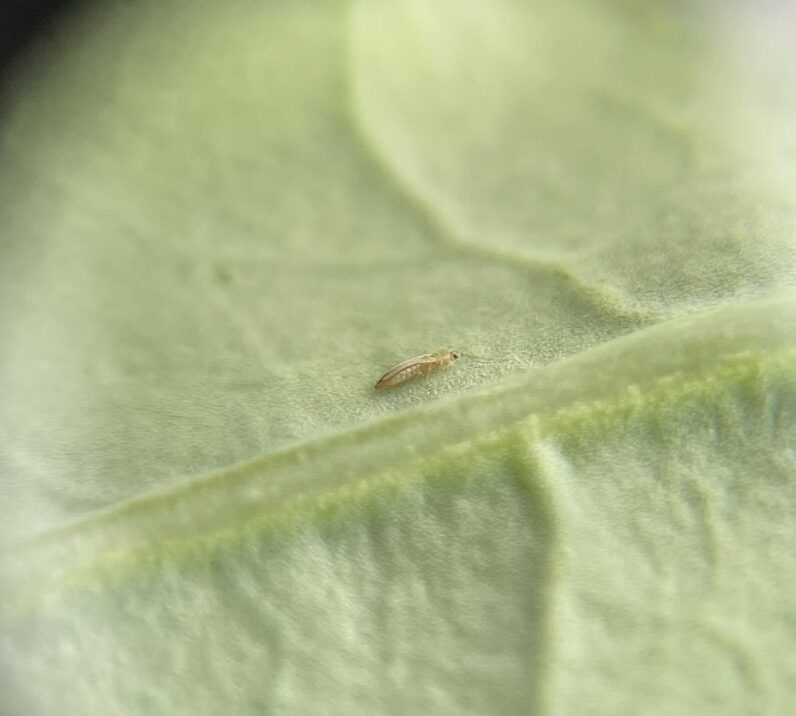

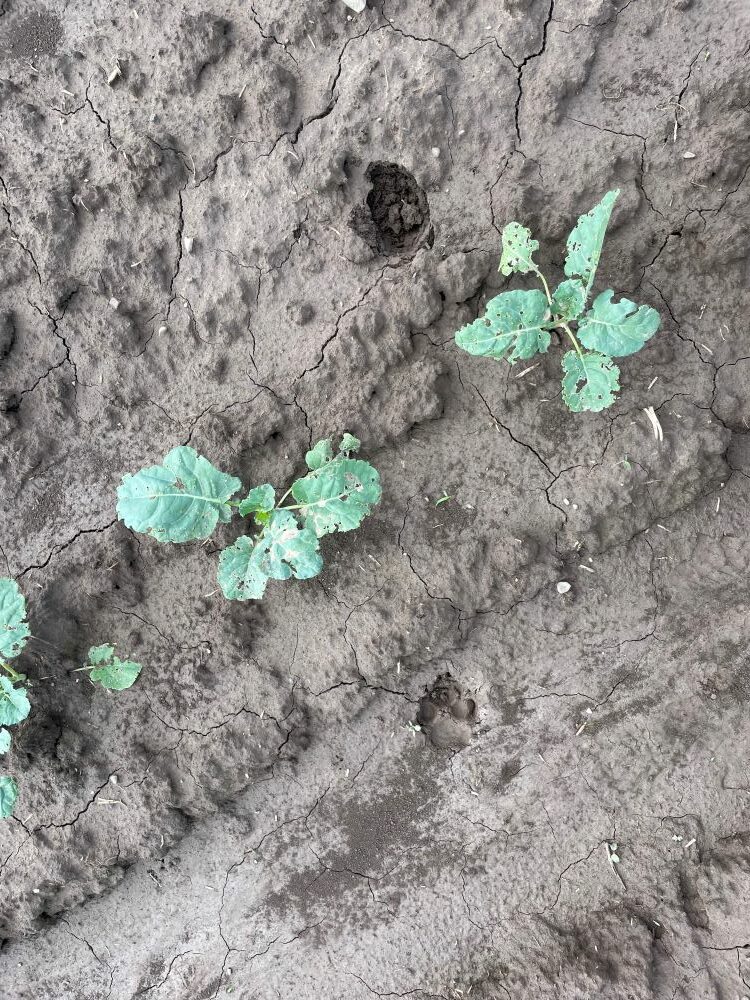
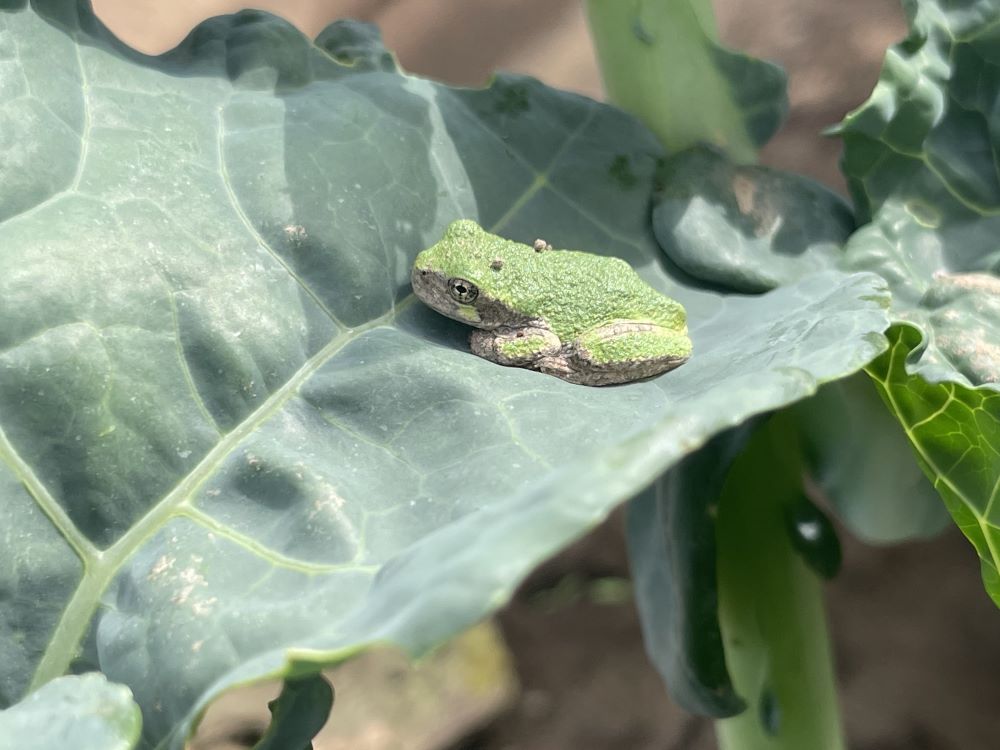
Historical data can hold many treasures. Sifting through data in old scouting notebooks, I found many entries with information on the pest and disease pressure on brassicas over the years. For example, in 2016, it was noted there was high pest pressure from all three caterpillars – imported cabbageworms, diamondback moth, and cabbage loopers – in the cauliflower. In 2018, pest pressure varied but only a couple of days scouted showed sections above the threshold for caterpillars. Alternaria and Black Rot have been the most consistent diseases at the farm. This year, one of our first broccoli sections had high levels of Alternaria in August. In one of the old scouting notebooks, I came across the poem below written by Anne Bloomfield in 2018 when she scouted the vegetable fields at the farm.
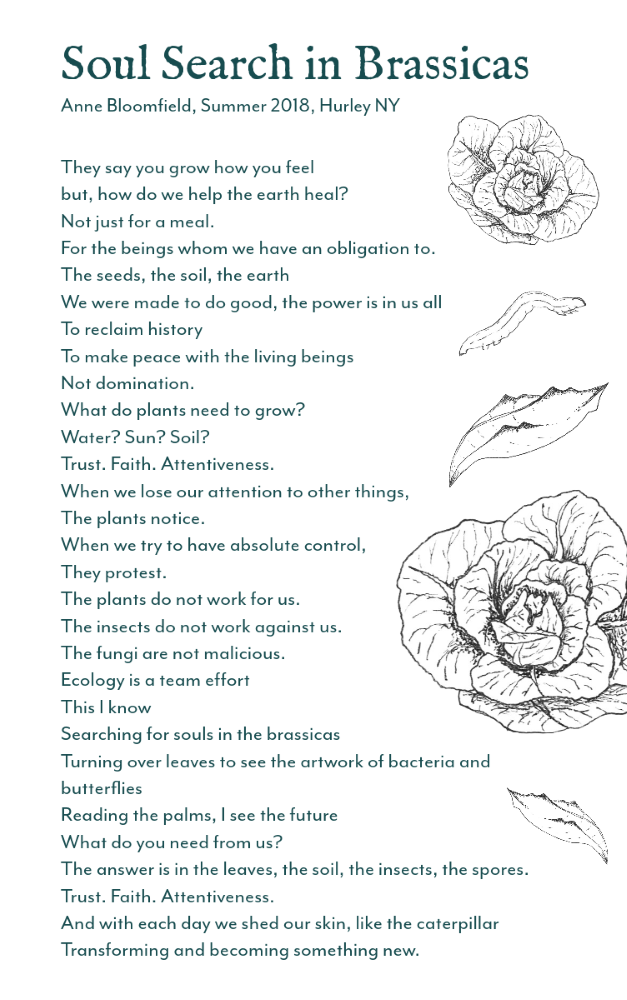
Just as there are surprises in the field, there are hidden gems when looking back at previous data. The poem captures the feeling of walking on the soil, stopping at a plant and turning over each broccoli or cabbage leaf to discover who is using the plant and how. I hope it inspires you to look even more closely at crops you may be growing or eating and think, what else might have visited the crop?
Resources:
https://entnemdept.ufl.edu/creatures/veg/leaf/diamondback_moth.htm
cabbage looper – Trichoplusia ni (Hübner)
(ufl.edu)Alternaria Leaf Spot of Brassicas | Cornell Vegetables
